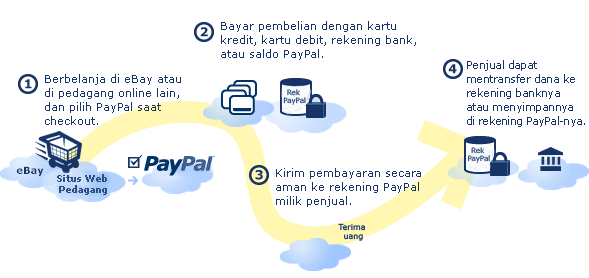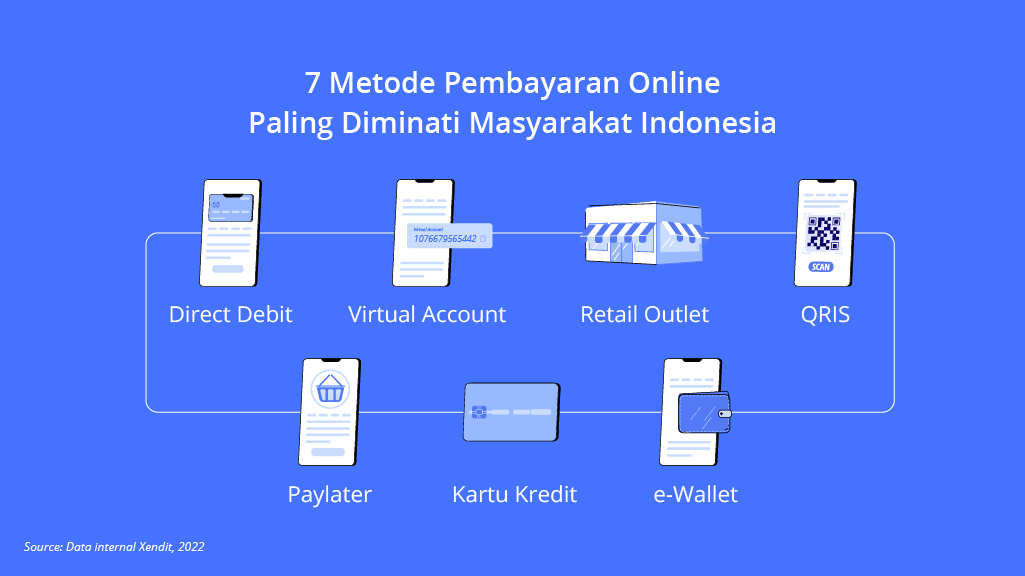History of PayPal: From the Beginning to Becoming One of the Largest Online Payment Systems in the World
History of PayPal: From the Beginning to Becoming One of the Largest Online Payment Systems in the World

PayPal is one of the largest online payment systems in the world, allowing users to make transactions online easily and safely. However, have you ever known how PayPal was first created and developed into what it is today? Let's look at the history of PayPal from the beginning to becoming one of the largest online payment systems in the world.
The Beginning of PayPal (1998)
PayPal was created in 1998 by two people, namely Peter Thiel and Max Levchin. The two of them first met at Stanford University, California, United States. Peter Thiel is a graduate of the Department of Physics and Philosophy, while Max Levchin is a graduate of the Department of Computer Science. They both have the same vision, namely to create an online payment system that is easy, safe and efficient.
Initially, PayPal was called Confinity, which was a company created by Peter Thiel and Max Levchin to develop mobile payment technology. Confinity later merged with X.com, a company created by Elon Musk, who also had the same vision. In 2000, Confinity and X.com merged into one company, which was later named PayPal.
PayPal Development (2000-2002)
In 2000, PayPal began developing its online payment system. They created technology that allows users to carry out online transactions using email as an identity. This system is very easy to use, because users only need to have an email account to be able to make transactions.
In 2001, PayPal began developing new features, such as automatic payments and interbank money transfers. They also started improving the security of their systems, using advanced encryption technology.

By 2002, PayPal had become one of the largest online payment systems in the world. They have over 1 million user accounts, and do $3 billion in transactions per year.
Takeover by eBay (2002)
In 2002, PayPal was taken over by eBay, the world's largest e-commerce company. The takeover was carried out for $1.5 billion. At the time, PayPal had more than 2 million user accounts, and was doing $5 billion in transactions per year.
After being taken over by eBay, PayPal continued to develop its online payment system. They created new features, such as credit card payments and international money transfers.
New Feature Development (2008-2015)

In 2008, PayPal began developing new features, such as PayPal Mobile, which allows users to make transactions online using their mobile phones. They are also starting to develop mobile payment technology, such as NFC (Near Field Communication).
In 2010, PayPal began developing its online payment system in Asia Pacific. They opened offices in Singapore, Hong Kong and Australia, to increase the use of online payment systems in the region.
In 2013, PayPal celebrated its 15th anniversary. At that time, they had more than 140 million user accounts, and carried out $180 billion in transactions per year.
Separation from eBay (2015)
In 2015, PayPal was separated from eBay, and became an independent company. This separation was carried out to increase PayPal's flexibility and ability in developing its online payment system.
After being separated from eBay, PayPal continued to develop its online payment system. They created new features, such as PayPal One Touch, which allows users to make transactions online with one touch.
Current PayPal (2016-Present)
Currently, PayPal is one of the largest online payment systems in the world. They have more than 360 million user accounts, and carry out $720 billion in transactions per year.

PayPal continues to develop its online payment system, by creating new features and improving the security of their system. They also continue to increase the use of online payment systems throughout the world, especially in the Asia Pacific region.
In recent years, PayPal has made several acquisitions, such as the acquisition of Xoom, an online payments company that specializes in international money transfers. They have also collaborated with several other companies, such as Alipay, an online payment company that specializes in online payments in China.
Conclusion
PayPal has become one of the world's largest online payment systems, with more than 360 million user accounts and carrying out $720 billion in transactions annually. PayPal's history is a long and interesting one, starting from Confinity's inception in 1998, to becoming the largest online payment system in the world today.
PayPal continues to develop its online payment system, by creating new features and improving the security of their system. They also continue to increase the use of online payment systems throughout the world, especially in the Asia Pacific region.
In recent years, PayPal has made several acquisitions and collaborations with several other companies, to increase the use of online payment systems throughout the world.
Post a Comment for "History of PayPal: From the Beginning to Becoming One of the Largest Online Payment Systems in the World"
Post a Comment